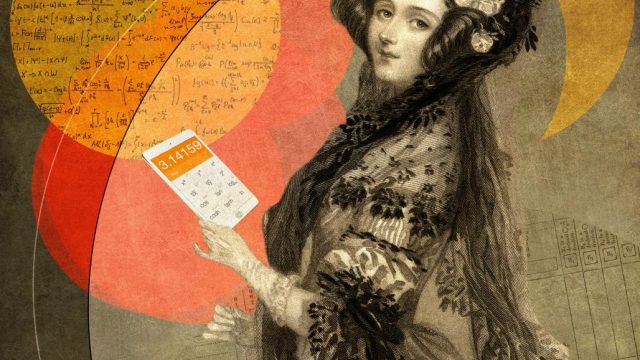Ada Lovelace was a woman two centuries before her time, pioneering the science behind whatever it is you’re reading this on. The true motherboard of computer science.

When notorious poet Lord Byron married Annabella Milbanke in 1814, it was decidedly not a match made in heaven. They were totally unsuited – he a thrill-seeking sexual adventurer with a passion for words, she an intelligent no-nonsense pragmatist with a bent for science. But in 1815 their short union gave the world Augusta Ada Byron, later Countess of Lovelace, a mathematical wizard now credited as the world’s first ever computer programmer.
Perhaps it sounds unusual that a poet’s daughter would take such a path in life, but Ada never knew her father. He left England after separating from Annabella and died eight years later. Annabella didn’t want Ada to be like her father in any respect, so rather than teach her subjects usually reserved for girls, she insisted she be instructed in mathematics, logic, science and languages. As well as giving Ada an intellectual edge, Annabella was confident that such an education would ward off what she considered to be her husband’s mental instability. She wanted her daughter to focus on the practical sciences rather than the unreal and “frivolous” world of poetry.
Ada Byron was a clever girl who was so captivated by inventions that at the age of around 12, she even devised her own plans for a flying machine. Her understanding of mathematics and mechanics was exceptional in one her age.
Also on The Big Smoke
- Two literary sons an equal to their famous fathers
- Sins of the father: The sordid tale of Bach’s boys
- Know who you’re Googling: Christopher Robin
- Know who you’re Googling: Mary Shelley
- Intro-verse: The Romantic poets
When she was 17, Ada met Charles Babbage, the man who in the early 1830s built an advanced calculator he called the Difference Engine. His aim was to construct a machine to calculate complicated mathematical functions and thus avoid the human error that often occurred when large numbers of tables and figures were calculated by hand. He soon moved on to his next invention, the Analytical Engine, a more advanced version of his earlier machine and now considered a precursor to the modern digital computer.
Ada was deeply interested in Babbage’s designs and in 1843, while translating an Italian article about his machine, her own mathematical skills came to the fore as she made extensive annotations suggesting how to program Babbage’s machine by using specific operational sequences to solve various mathematical functions. The formulae she wrote – essentially instructions for the Analytical Engine to be able to process addition, subtraction, multiplication and division – make up what is now considered the first computer program.
Some say she predicted the computer age when she remarked that analytical engines would later be developed to go beyond mere calculation of figures to actual computing of information. Ada wrote that the analytical engine:
“…might act upon other things besides number, were objects found whose mutual fundamental relations could be expressed by those of the abstract science of operations, and which should be also susceptible of adaptations to the action of the operating notation and mechanism of the engine. Supposing, for instance, that the fundamental relations of pitched sounds in the science of harmony and of musical composition were susceptible of such expression and adaptations, the engine might compose elaborate and scientific pieces of music of any degree of complexity or extent.”
Ada had a far more successful marriage than her parents. In 1835 she married William King, later Earl of Lovelace, and they had three children together. Fortunately for Ada, he was very supportive of her scientific and technological work, although one suspects that Ada would not have accepted anything less.
Ada Lovelace was a woman ahead of her time and it would be another hundred years before mathematicians and computer scientists took her ideas on board. Now, there’s an international Ada Lovelace Day held on the second Tuesday of October to celebrate not just this computing pioneer but all women in science, technology, engineering and mathematics (STEM). The computer language “Ada”, developed in 1980 by the United States Department of Defence, is another nod to her contribution to computer science.
Although she never knew her famous father, Ada was always deeply interested in his life and poetry and when she died in 1852 at the age of only 36 – the same age Byron was when he died – she requested that she be buried beside him. There’s a certain poetry in that.



